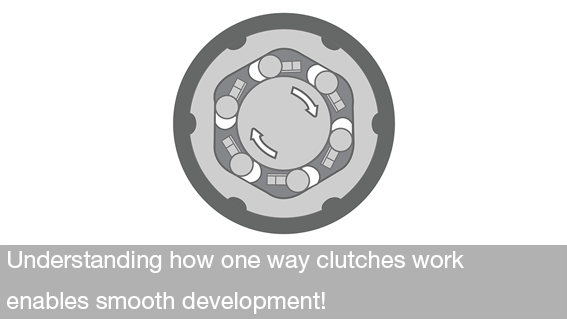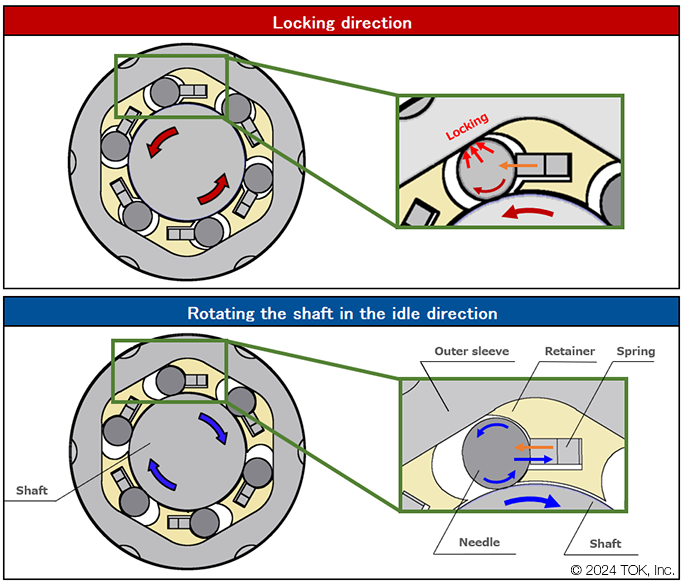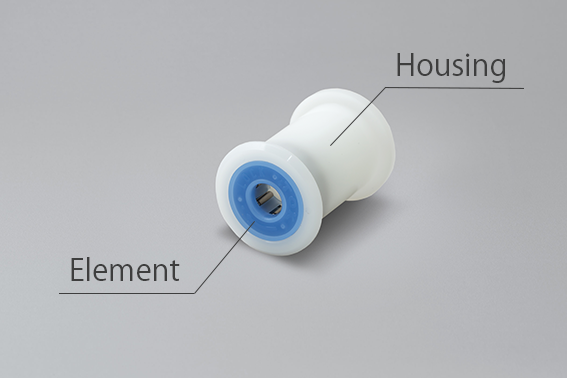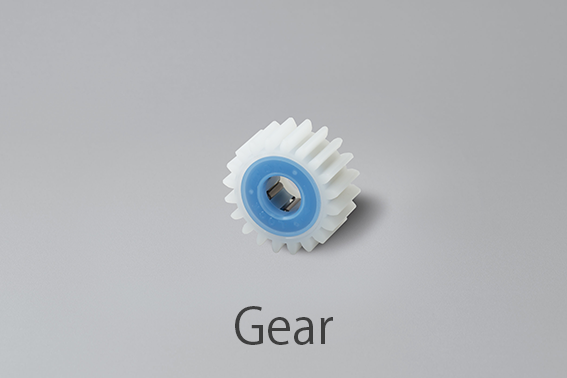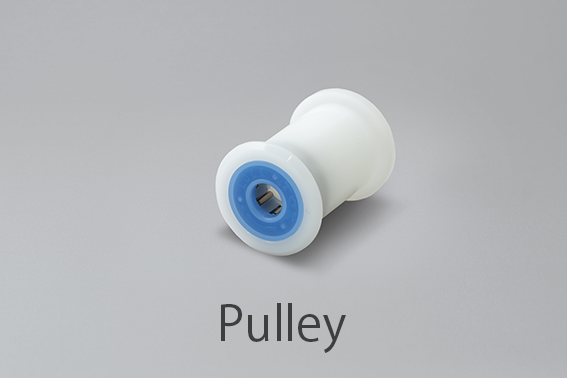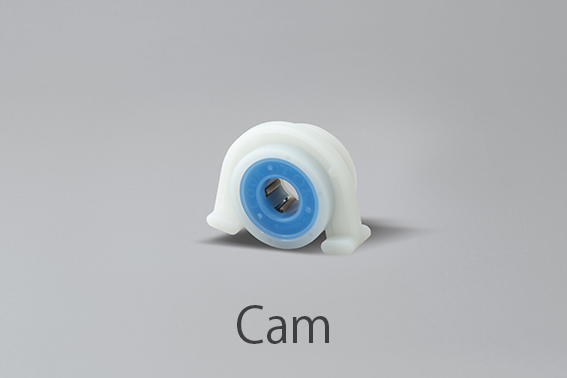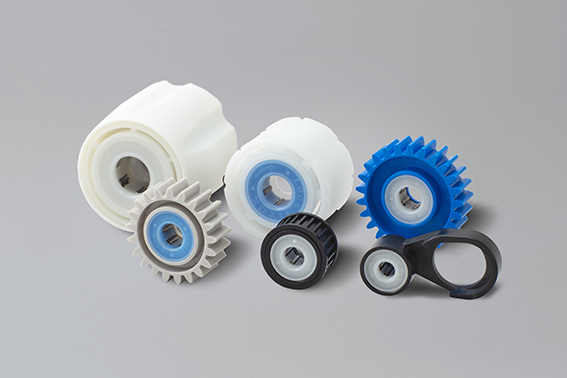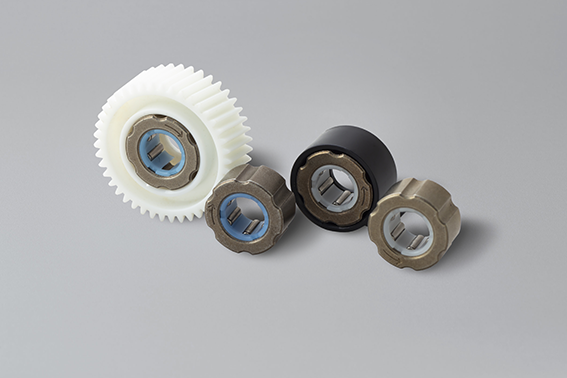 How does a One Way Clutch Work?
How does a One Way Clutch Work?
There are many kinds of one way clutches of structure, such as ratchet and sprag mechanisms.
TOK one way clutches have a structure that can transmit power in only one direction by inserting the needle pin in only one direction. This article explains in detail about this one way bearing with a stuck mechanism.
 One way clutch mechanism
One way clutch mechanism
As shown in the figure above, TOK one way clutch consists of the following elements
・Outer sleeve
・Retainer
・Spring
・Needle
The inside of the outer sleeve is hexagonal, and the needle is in the six wedge shaped spaces formed when the shaft is inserted into the outer sleeve. When you rotate the shaft in the direction where the needle is stuck between the outer sleeve and shaft, the clutch is locked and transmits power. Conversely, when you rotate the shaft in a direction where the needle is not stuck, shaft rotation is not transmitted to the outer sleeve via the needle, and the shaft idles without transmitting power. This is the basic mechanism of our one way clutch.
For convenience purposes, we have described the behavior of the clutch when the shaft is rotated, but of course, it is also possible to transmit power to the shaft by rotating the one way clutch.
 TOK one way clutch element features
TOK one way clutch element features
1. Good locking response
Locking responsiveness refers to the ease of locking when you rotate the shaft in the locking direction. A common measure of lock responsiveness is named backlash, which is quantified by the angle at which the clutch switches from idle to locked state. The backlash of the TOK one way clutch remains within 2.5° even after 1 million repetitions of locking and idling. For good locking response of a one way clutch, the needle should always be in contact with the outer sleeve and shaft, and a metal spring presses the needle to maintain this condition.
2. Good shaft conformability
Shaft conformity refers to the ability to set a wide range of shaft outer diameter tolerances. So-called “shell type” one way clutches manufactured by other companies are generally designed to have a shaft outer diameter tolerance of h7. However, you can use TOK one way clutches with shaft outer diameter tolerances at the h9 level, so they can lock to shaft outer diameters that cannot be locked by shell type one way clutches. For example, a shaft with an outer diameter of 6 mm will lock even with an outer diameter of 5.97 mm. This is achieved by designing the inside of the outer sleeve as a hexagonal shape to allow a wider area for the needle to be stuck.
3. Minimal damage to the shaft
The shaft inserted into the one way clutch has a plastic retainer that functions as a sliding bearing to prevent damage to the shaft, thus preventing squeaking and seizure that often occur when metal slides against metal.
At a glance, TOK one way clutches appear to be constructed entirely of plastic, but the main parts involved in locking are made of metal. Although this specification is ideal for office automation equipment and monetary equipment, it is essential to use the one way clutch with less than the allowable locking torque, because the outer sleeve will crack or needle indentation will occur and cause failure if the one way clutch is subjected to a torque in excess of the allowable torque.
 One way clutch usages
One way clutch usages
A one way clutch functions by incorporating an element into the housing. A gear shaped housing allows the one way clutch to transmit power in only one direction by incorporating it into the gear train. A pulley shape can be wrapped with rubber such as EPDM or urethane to feed paper that comes in contact with the rubber in only one direction, and when jammed, the clutch idles to pull the paper out. In the case of a cam, it serves as an anti-reversal mechanism for the shaft.
One way clutches alone cannot transmit power, but It is used in combination with various shapes of housings such as gears, pulleys, cams, and levers.
 Features of TOK one way clutch usages
Features of TOK one way clutch usages
TOK offers two main types of one way clutches.
1. All-in-one one way clutch
It refers to a one way clutch in which the housing and one way clutch are integrated and you can use it as is. TOK does not provide one way clutches only, but can guarantee the performance including the housing by designing, molding, and assembling the optimum housing by TOK, which is well versed in the characteristics of plastic.
2. Single one way clutch element
TOK refers to a one way clutch that we can supply only as a one way clutch (without housing) as a "single one way clutch element". This is suitable for customers who wish to mold and assemble the housing themselves.
 Summary of How does a one way clutch work?
Summary of How does a one way clutch work?
How was this article? There are various locking mechanisms for one way clutches in the world, but we hope you can see why TOK one way clutches have good response, can be set with a wide shaft outer diameter tolerance, and are gentle to the shaft. You can select the optimum product from the TOK one way clutch page, but we also offer customized high torque designs, so if the standard specifications do not meet your needs, please contact us.
The shaft specification is also an important factor in fully demonstrating the performance of the one way clutch. Please take a look at the reference material (Shaft specifications for one way cutches).

